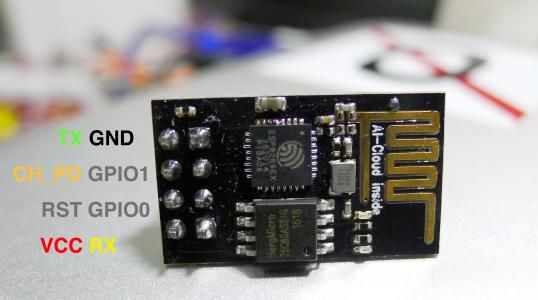
Introduction
With the continuous advancement of the information revolution in the 21st century, the popularity of smartphones has increased significantly. Humans have begun to consider how to control objects using smartphones or computers, which has also promoted the rapid development of the Internet of Things (IoT) in recent years. This article takes the ESP8266EX Wi-Fi module as an example to introduce its role in the IoT and how to use the module.
Module Introduction
Overview: The ESP8266EX is a Wi-Fi module launched by Espressif Systems, priced at around 10 yuan. Despite its low cost, it features an ultra-low power Tensilica L106 32-bit RISC processor, with a maximum CPU clock speed of 160 MHz. It supports real-time operating systems (RTOS) and Wi-Fi protocol stacks, allowing up to 80% of processing power to be reserved for application programming and development. This Wi-Fi module can be considered a small microcontroller, with 8 pins, and can connect to external devices to achieve more functions.
For detailed information, please refer to the Espressif official website:
https://www.espressif.com/en/products/hardware/esp8266ex/overview

ESP8266 Appearance and Pin Distribution Diagram

The ESP8266 module has three operating modes: AP mode, Station mode, and soft-AP mode. In AP mode, the Wi-Fi module emits a Wi-Fi signal that can be searched and connected by other devices (such as smartphones and PCs). In simple terms, the Wi-Fi module in AP mode acts as a router, although it lacks internet access. Station mode means the ESP8266 module acts as a terminal, connecting to indoor routers, mobile hotspots, or AP hotspots, and can access the internet through the router, allowing remote control of devices via the internet from smartphones or computers. The soft-AP mode is a combination of the first two modes.
Specific Example
This example establishes network communication using the Wi-Fi module, with a PC acting as the server to facilitate communication. Before introducing this example, we will first discuss the essential SDK (Software Development Kit) for programming this module, which includes many pre-written code blocks that developers can easily call upon.
The SDK can be downloaded from the following URL:
https://www.espressif.com/en/support/download/sdks-demos


Example Principle

To achieve network communication, there must be a client and a server, and a connection must be established between the two ends. The steps to configure the ESP8266 as a client are as follows:
① First, set the ESP8266 to work in soft-AP mode, which can be done with the command wifi_set_opmode(0x03);
② Then, configure the connection parameters based on the espconn.h header file and protocol provided in the SDK. This step can refer to examples without needing to worry about the specifics of the protocol.
③ Establish functions and callback functions for network communication.
The callback functions for successful connection, reconnection on failure, successful data reception, successful data transmission, and disconnection are crucial. We can write code in the callback functions to achieve the desired functionality, for example:
void ICACHE_FLASH_ATTR user_tcp_recon_cb(void *arg,sint8 err){// Reconnection callback function
os_printf(“Connection error, error code is %d\r\n”,err);// Print the connection error code
}
④ In the callback function for receiving data or the callback function for successful data transmission, it is recommended to introduce a delay before executing the disconnection operation to ensure that the underlying function execution is completed.
After these steps, the configuration of the ESP8266 client can be completed. A network debugging assistant can be downloaded on the PC to view the program results. For specific code, please refer to the following document:
https://blog.csdn.net/qq_28877125/article/details/62898895
There are many online documents regarding ESP8266 programming and application examples, such as controlling the brightness of LED lights using the Wi-Fi module, controlling household sockets, etc. Students interested in the Internet of Things can purchase a module on an online marketplace to study and implement their desired functionalities.

﹃
Finally
a
small
suggestion
﹄
·
·
·
·
·
For programming this module, it is essential to read and understand the code written by others online to avoid unnecessary troubles when writing your own programs~


Here are a few additional tutorial links:
https://blog.csdn.net/it_boy__/article/details/71975797
https://blog.csdn.net/d521000121/article/details/68486764
https://www.jianshu.com/p/a781855b4f1f
Images and text: Xu Weizhi( QQ:782158370)
Layout: Song Shanshan
Review: Yang Yumou
